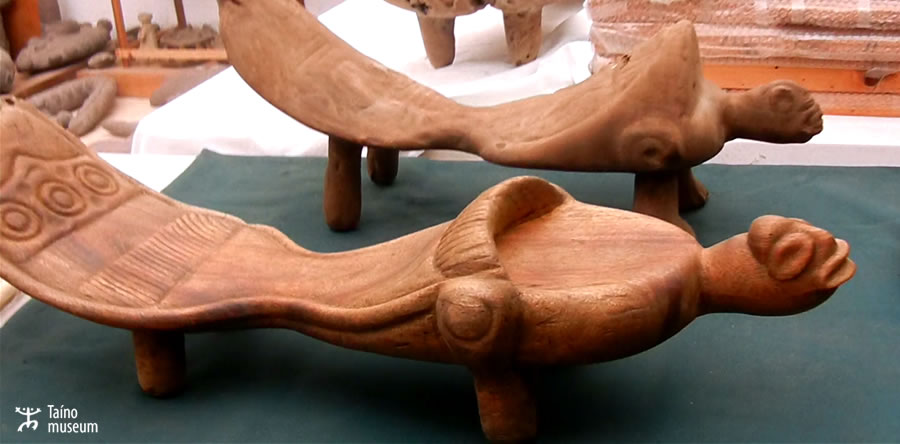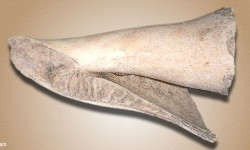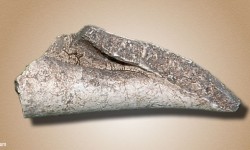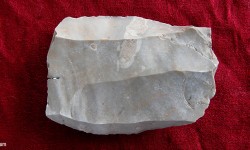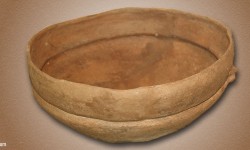This wooden seat was used by chiefs in the Caribbean Taino culture during ceremonial communication with the spirit world.
It is sculpted from the dense tropical hardwood guayacan (Guaiacum officinale) and is in the form of a powerful male figure crouching on all fours.
When Christopher Columbus arrived in 1492, much of the Caribbean was inhabited by the Tainos. Their culture was the result of 7,000 years of adaptation to this island environment, but contact with Europeans brought devastating consequences including enslavement, disease and the collapse of traditional Taino society.
Chiefs and shamans would sit on low stools like this one while inhaling hallucinogenic snuff called cohoba. The hammered gold eyes set into the stool’s face signal the chief’s ability to ‘see’ into the spirit world.
Tainos believed in powerful spiritual forces called çemí that controlled nature. The çemí spirits could choose to reveal themselves as sculptures. By sitting on this stool chiefs publicly displayed their power over the spirit world and their ability to manage and control the invisible forces governing the natural world as well as human affairs.
Some of these sculptures were found in caves, hidden from the Tainos’ enemies. Caves were important in Taino myths and religion as the place where humanity originated and where people will return after death.
These rare wooden sculptures offer a tantalising glimpse into the culture and traditions of the Taino people.

